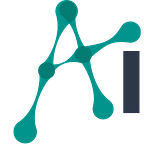Harnessing AI-driven traffic forecasts to reduce network energy consumption by 50% without impacting user experience
Improving the energy efficiency of mobile networks is critical, both from an operational expenditure standpoint (given the rising electricity prices) and from an environmental perspective (industries have ambitious goals to reduce their CO2 footprint in the face of the climate and biodiversity crisis).
Overview of the Net AI Solution
To help Communications Service Providers (CSPs) address these challenges, Net AI developed EnergAIze. EnergAIze embeds Net AI’s proprietary AI-driven forecasting engine, SoothsAIer, which use historical and real-time network traffic data to predict upcoming traffic throughput at the level of individual cells. Combined with per-cell bandwidth information and radio link estimates, EnergAIze anticipates the radio frequency (RF) resources needed to accommodate upcoming user demands. This enables automatic control of RF carrier power, keeping ‘alive’ only as many of them as needed to fulfil projected demand.
Although our solution is suitable for many different types of network architectures, we packaged it as an xApp for the O-RAN Global PlugFest Spring 2023 at the i14y Lab in Berlin, hosted by Deutsche Telekom and EANTC. We successfully integrated the xApp with the VMware Distributed Radio Intelligent Controller (dRIC), and demonstrated 50% energy savings, while maintaining 99.3% accessibility, in a scenario with a city-scale network deployment comprising 270 cells. The demo expands our excellent collaboration with VMware and positions Net AI as a key player in the network efficiency arena.
Under the Hood
In the scenario we considered, one or more O-RAN E2 nodes, which can be Centralised Units (CUs), Decentralised Units (DUs) or both, send Key Performance Metrics (KPMs) to the VMware near Real-Time RIC (nRT-RIC) via the E2 interface. The KPM we consider in our use case and to which our xApp subscribes is the aggregated traffic throughput observed at each antenna in the target geographical area.
Net AI’s advanced SoothsAIer forecasting engine uses a Convolutional LSTM neural model to extract both temporal and spatial (geographical) correlations among throughput patterns observed across the target deployment. Based on the extracted abstract features, the AI engine predicts the expected throughput at each individual cell, over near-term time horizons (tens of minutes to hours). We train our AI model using a customisable “capacity-aware” loss function to strike a balance between forecasting accuracy and minimising the number of under-estimation events, which would translate into under-provisioning of resources and would negatively impact user experience.
The throughput forecasts are saved to the VMware RIC Shared Data Layer (SDL), so that they can be used by other xApps deployed in the network. Most importantly, the forecasts are fed to an anticipatory radio resources autoscaling logic that we developed. This logic uses information about the available bandwidth at each cell and expected radio link qualities. Then using the forecasts made with SoothsAIer, it computes the optimal number of carriers that should be active at each location, so as to accommodate the predicted throughputs. The corresponding carrier ON/OFF switch messages are finally sent to E2 nodes through the E2 interface, effectively improving energy efficiency.
Benefits
According to GSMA, 20–40% of network OPEX is attributed to energy consumption [1] and Nokia argues that for most CSPs, the radio access networks (RANs) account for ~80% of all mobile network energy consumption [2].
Compared to the “always on” strategy, where the infrastructure offers 100% accessibility at all times, EnergAIze delivers a 50% reduction of the energy consumption in a network deployment scenario with 270 antennas, while maintaining 99.3% availability. In contrast, the commonly used approach whereby CSPs switch off RF carriers during periods of low demand (i.e. overnight) can only ensure a 4% reduction in energy consumption for the same scenario. Driving RF carrier control using average throughput values observed at any point in time over historical periods of the same duration as those EnergAIze uses for model training could yield energy savings of up to 80%. However, this comes at the high cost of 17% under-provisioning instances, which dramatically reduces accessibility and therefore user experience.
[1] GSMA Future Networks, Energy Efficiency: An Overview, May 2019.
[2] Nokia, Your network is wasting energy and Artificial intelligence can change that, June 2021.
